
Diversity and Inclusion: What We’ve Been Getting Wrong
The workplace is not always a welcoming place for women, minorities, and other underrepresented groups. Differences in career opportunities and wage disparity have led to uneven participation in economic activity. In the U.S., this has been noted particularly in gender differences. Women account for 47% of the labor force but occupy only 17% of the board seats[1]. Of the firms represented in the S&P 500, only 24 have a female CEO[2]. The situation is not much different with respect to race. While Hispanics comprise 17% of the US labor force and have a higher labor participation rate than any other race, they occupy less than 10% of management roles[3]. Race has been linked to unequal access to the most critical drivers of economic success, namely power, privilege, and control.
Business and institutions can do more to create a fair and equitable society. A rising focus on diversity and inclusion (D&I) has become a step in the right direction. However, the real impact of existing programs is minimal, primarily due to ill-informed practices or lack of full commitment from organizational leaders. Below is a list of the biggest missed opportunities resulting from making misplaced investments in D&I.
THE OPPORTUNITY
Nurturing a diverse workforce is not only a good societal practice but also good for business. As evidenced by a number of studies, a diverse workforce has been associated with superior business performance. According to a McKinsey study, firms that are in the top quartile for racial and ethnic diversity are 35% more likely to have financial returns above their industry medians[4]. Similarly, firms that are in the top quartile for gender diversity are 15% more likely to outperform their industry peers. In general, firms with greater racial diversity are associated with increased sales revenue, a higher number of customers, greater market share, and greater relative profits. Despite the purported benefits of increasing diversity efforts, organizations across the world struggle to attract and retain a diverse workforce.
THE CHALLENGE
Achieving racial, ethnic, and gender diversity has been a tough challenge. Despite the investments, in many areas advancements have halted or even regressed. In the United States, women’s participation in the labor force had been rising, reaching a high of 60.04% in 1999. However, since the year 2000, women’s participation in the workforce has been declining[5]. Women comprise 47% of the U.S. labor force and 51% of the management and professional occupations. This gender balance steadily declines as we look higher up in the organization, with women holding only about 17% of corporate board seats[2]. Indeed, many researchers and organizations alike have been interested in this “glass ceiling” effect, or the decline of women’s representation as we move higher up the chain of management.
The picture is similarly grim concerning race and ethnicity. In the United States, there is an uneven racial and ethnic representation in management roles. Asians are typically over-represented in management and related roles (51%), Hispanics are under-represented (22%). Hispanics work longer hours in lower-paying jobs, such as service (24.4% Hispanic) and construction (32%)[3].
Regarding generational differences, for the first time since the great depression, US parents believe their children will not be better off than them[8]. Furthermore, the workforce is rapidly aging. Retired workers over the age of 55 are expected to make up more than 1 in 4 of all workers in the U.S. by the year 2022[9]. Longer lifespans coupled with economic declines have led many to work beyond the traditional retirement age of 65 years. Such demographic shifts make for new and interesting concerns for organizations as they face the rising tide of diversity.
THE PATH FORWARD
Despite a great deal of talk about diversity and inclusion in many industries, investments in D&I efforts have often been misplaced. Most efforts are narrowly focused. The intervention themselves either lack efficacy or are severely underpowered. Given the scale of the challenge and the inevitability of diversity at work, organizations that lean on evidence-backed ways to promote D&I stand to gain in substantial ways. Here are four practices that have received significant empirical support.
First, organizations must shift their efforts from running isolated programs to adopting an integrated talent management focus, one that addresses the entire life cycle of an employee. The vast majority of diversity programs focus on hiring. In the United States, this is partly due to a legal system where practices are based on precedence. The infamous lawsuit between Griggs vs. Duke Power put a spotlight on the impact of hiring discrimination[10]. Even today, many D&I efforts fixate entirely on avoiding similar lawsuits by solely focusing on hiring practices. A recent survey from the Boston Consulting Group shows that the primary barrier that women face is less related to hiring[11]. A bigger challenge is in finding meaningful advancement opportunities. To fully address the diversity and inclusion challenges, organizations must take an integrated approach, one that addresses the entire employee life-cycle. Furthermore, once an organization has a diverse group of employees, they must invest in engaging, retaining, and promoting these employees, as well as creating opportunities for advancement.
Second, organizations must look to make long-term investments in workplace flexibility programs, a practice that has been linked to affecting substantial improvements in gender diversity. Compared to men, women are more likely to be the primary caregivers and bear a disproportionately higher share of familial responsibilities. As a result, women are more likely to withdraw from the workplace when the challenges of balancing professional and personal lives become difficult. In one of the most influential studies on what works in advancing gender diversity, Australian researchers Kateryna Kalysh, Carol Kulik, & Sanjeewa Perera gathered panel data across twelve years from a random sample of 675 organizations involving over 600,000 employees[12]. They found that organizations that consistently invested in work-life practices for eight years saw an increase in the proportion of women in leadership positions. However, this pattern of the relationship was true only for firms where at least 43% of the employees were female. This study further highlights the importance of taking an integrated talent management approach to promote D&I. Assembling the right bundle of practices is an important consideration. The study found that when company efforts included multiple options such as flexible schedules, parental leave arrangements, and provisions of services for caregiving, it was associated with a higher proportion of women in management. Importantly, this relationship was found only after a time lag of eight years of investing in such work-life programs. Organizations must keep in mind this caveat and prepare to commit to long-term diversity initiatives.
Third, organizations must take a hard look at their programs that emphasize differences rather than bringing people with differences together to work toward a common goal. Many traditional diversity training initiatives focus on what makes us different from each other. There is growing evidence that these traditional diversity training efforts have backfired and increased negative feelings towards certain minority groups[13]. In a way, it’s similar to the adage of “don’t think about pink elephants.” When someone is told not to think about a pink elephant, the very first thing to capture their thought is a pink elephant. Likewise, if organizations tell employees that they are different but do not focus on these differences, it may only increase division[14]. Leading social psychologist, Dr. Susan Fiske recommends a better approach to diversity training. Enabling and empowering employees to work toward a common goal can be a great equalizer. Such efforts enable teams to connect based on similarity in purpose rather than the differences of demographic diversity. Experts agree that for diversity and inclusion efforts to be successful, they must meet four important conditions. First, the effort must result in equalization of status. Second, it must bring employees together to focus on common goals. Third, work must be structured such that is requires cooperation among members of diverse groups to achieve the common goal, and fourth, there must be consistent leadership support using rewards and punishments. In sum, forming diverse but equal work teams and focusing on common goal achievement through teamwork will produce significantly better D&I results than utilizing more traditional training sessions.
Fourth, adopt habit-breaking interventions which bear significant promise in reducing biased thinking[17]. A habit is an implicit bias against another group that has been formed unconsciously over time. Thus, bias and discrimination are like unwanted bad habits. Because these biases, or habits, exist in all of us and are formed without our conscious knowledge, they must be addressed consciously to be altered. Habit-breaking focuses on reducing biased ways of thinking through a combination of techniques similar to learning a new skill. It begins with gaining awareness of the existence of bias in one’s thinking and reflecting upon how it affects minority groups. Once these patterns are detected and made conscious, it requires practicing strategies to reduce the biases. This technique of “breaking the habit” of implicit bias is effective because it requires learning about the contexts that activate the bias and findings ways to replace the biased responses with responses that reflect one’s non-prejudiced goals. The efficacy of this method has been well documented. However, learning to monitor for one’s own biased thinking and replacing it with a non-prejudiced way of thinking requires concerted practice over an extended period. One study compared the hiring rates of women faculty at two departments, one used the habit-breaking method, and the other did not. Over three years, the department that utilized a habit-breaking intervention saw a 52% increase in the number of women hired compared to the control’s 28% increase towards the same goal.
This blog presents a set of well-tested ideas for advancing diversity and inclusion in organizations. While the approaches call for taking a holistic view of talent, the outcomes are not restricted to D&I alone. Companies can expect to reap benefits that go much beyond talent outcomes including better employer branding and positioning with customers leading to the upside of better business outcomes. By writing this blog, we hope to have put a spotlight on those practices that are backed by strong evidence, thereby sifting out the popular and widely available information from those that have a higher probability of driving success. For savvy HR leaders, our hope is that these evidence-based guidelines present a viable approach to managing human capital risks and returns.
Author notes
I am grateful to Alyssa Perez for the research support and help in writing this blog.
References
1| Bureau of Labor Statistics. Labor Force Statistics from the Current Population Survey. Retrieved from https://www.bls.gov/cps/cpsaat11.htm
2| CNBC. Retrieved from https://www.cnbc.com/2018/08/06/these-are-the-only-women-ceos-left-among-sp-500-companies.html
3| Bureau of Labor Statistics (2018). Race, Economics, And Social Status. Retrieved from https://www.bls.gov/spotlight/2018/race-economics-and-social-status/pdf/race-economics-and-social-status.pdf
4| McKinsey and Company (2015). Why Diversity Matters? Retrieved from https://www.mckinsey.com/business-functions/organization/our-insights/why-diversity-matters
5| Brookings, (2017. 10 Facts about American Women in the Workforce. Retrieved from https://www.brookings.edu/blog/brookings-now/2017/12/05/10-facts-about-american-women-in-the-workforce/
8| Pew Research Center (2006). Once Again, the Future Ain’t What It Used to Be. Retrieved from http://www.pewresearch.org/wp-content/uploads/sites/3/2010/10/BetterOff.pdf
9| Bureau of Labor Statistics (2017). Older workers: Labor force trends and career options
Retrieved from https://www.bls.gov/careeroutlook/2017/article/older-workers.html
10| Griggs v. Duke Power Co. Retrieved from https://en.wikipedia.org/wiki/Griggs_v._Duke_Power_Co.
11| The Boston Consulting Group. (2017). From Intention to Impact. Retrieved from https://media-publications.bcg.com/BCG-Bridging-diversity-gap-workplace-Nov2017.pdf
12| Kalysh, K., Kulik, C. T., & Perera, S. (2016). Help or hindrance? Work–life practices and women in management. The Leadership Quarterly, 27(3), 504-518.
13| Dobbin, F., & Kalev, A. (2016). Why diversity programs fail. Harvard Business Review, 94(7), 14.
14| Gaertner, S. L., Dovidio, J. F., Anastasio, P. A., Bachman, B. A., & Rust, M. C. (1993). The common ingroup identity model: Recategorization and the reduction of intergroup bias. European review of social psychology, 4(1), 1-26.
17| Devine, P. G., Forscher, P. S., Austin, A. J., & Cox, W. T. (2012). Long-term reduction in implicit race bias: A prejudice habit-breaking intervention. Journal of experimental social psychology, 48(6), 1267-1278.



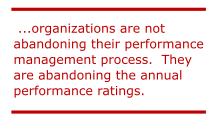 JS:
JS: SSB: Are performance appraisals inherently bad or is it the way they are used that’s at the heart of the problem?It seems like the key players in the performance appraisal process are not getting their needs met. (a) Employees want to feel that the organization is vested in their growth and well-being, but are not getting the developmental support; (b) managers are uncomfortable or ineffective in distinguishing performance, and (c) organizations are unable to meaningfully distinguish performance through their rewards system. Do you see these as the underlying issues leading to concerns with the appraisal process?
SSB: Are performance appraisals inherently bad or is it the way they are used that’s at the heart of the problem?It seems like the key players in the performance appraisal process are not getting their needs met. (a) Employees want to feel that the organization is vested in their growth and well-being, but are not getting the developmental support; (b) managers are uncomfortable or ineffective in distinguishing performance, and (c) organizations are unable to meaningfully distinguish performance through their rewards system. Do you see these as the underlying issues leading to concerns with the appraisal process?

 The trick is to quit asking the question “how do we make better ratings?” Accept that we can only do so much, there will always be a problem. Whether or not you have an overall rating probably ought to depend on the culture of the organization and the goals of the organization. What’s most important is to deemphasize the appraisal and emphasize what happens every single day. A performance appraisal is an annual event. It happens once, and it’s a 30-minute conversation. What about the 51 weeks of the year? That’s where you are driving behavior. This is where things like trust in the company, justice, and other things become important. How many people get up every day and think: this is my rating? How am I going to react today? People want to feel their work made a difference and are energized when they get praises and positive feedback. Why wait to do that only once a year?
The trick is to quit asking the question “how do we make better ratings?” Accept that we can only do so much, there will always be a problem. Whether or not you have an overall rating probably ought to depend on the culture of the organization and the goals of the organization. What’s most important is to deemphasize the appraisal and emphasize what happens every single day. A performance appraisal is an annual event. It happens once, and it’s a 30-minute conversation. What about the 51 weeks of the year? That’s where you are driving behavior. This is where things like trust in the company, justice, and other things become important. How many people get up every day and think: this is my rating? How am I going to react today? People want to feel their work made a difference and are energized when they get praises and positive feedback. Why wait to do that only once a year?
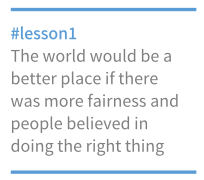 I nurtured dreams of going away to college but coming back in the summers to be with my family and friends. Sadly, things were not going so well for the company. Employees stopped receiving their salaries. I saw first-hand the impact of poor leadership, lack of accountability and the resulting impact on a small town. With no other options for making a living, people started committing suicide, theft, and crime increased. What was once a paradise was no longer so. While things were falling apart for the average employee, the leaders seemed to be doing fine, still taking foreign trips with their families, presumably on the company’s dime. It just did not seem fair. It was during this time that I learned about the field of Organizational Psychology. In a women’s magazine, I read how the Tata Group used practices such as testing to bring fairness in the hiring process. I learned that a US-trained Organizational Psychologist was leading this work. At that moment it hit me that the world would be a better place if there were more fairness and people believed in doing the right thing. At that early age, I had discovered my professional interest.
I nurtured dreams of going away to college but coming back in the summers to be with my family and friends. Sadly, things were not going so well for the company. Employees stopped receiving their salaries. I saw first-hand the impact of poor leadership, lack of accountability and the resulting impact on a small town. With no other options for making a living, people started committing suicide, theft, and crime increased. What was once a paradise was no longer so. While things were falling apart for the average employee, the leaders seemed to be doing fine, still taking foreign trips with their families, presumably on the company’s dime. It just did not seem fair. It was during this time that I learned about the field of Organizational Psychology. In a women’s magazine, I read how the Tata Group used practices such as testing to bring fairness in the hiring process. I learned that a US-trained Organizational Psychologist was leading this work. At that moment it hit me that the world would be a better place if there were more fairness and people believed in doing the right thing. At that early age, I had discovered my professional interest.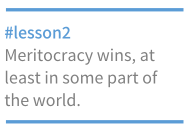 quite willing to give up on my dreams, but I did put a plan B in place for safe measures. I applied to several graduate schools in the US and also to a couple of entry-level roles in India. As it turned out, I was one of the successful job candidates’ at Tata Motors, but they would not offer me the job because the other finalist had a family member employed by the company. I had started to receive rejection letters from graduate schools. Weeks went by when I felt hopeless. And then a letter came in the mail from the University of Central Florida. It said I had secured admission to their masters in Industrial and Organizational Psychology program with funding. I remember reading the mail several times to make sure. My dreams were finally going to come true. I learned another important lesson, meritocracy wins, at least in some parts of the world. My family history, financial means, and connections didn’t matter. Someone has made a judgment about my capacity using my past performance (e.g., GPA, GRE scores, personal essay) and it was about to change my life.
quite willing to give up on my dreams, but I did put a plan B in place for safe measures. I applied to several graduate schools in the US and also to a couple of entry-level roles in India. As it turned out, I was one of the successful job candidates’ at Tata Motors, but they would not offer me the job because the other finalist had a family member employed by the company. I had started to receive rejection letters from graduate schools. Weeks went by when I felt hopeless. And then a letter came in the mail from the University of Central Florida. It said I had secured admission to their masters in Industrial and Organizational Psychology program with funding. I remember reading the mail several times to make sure. My dreams were finally going to come true. I learned another important lesson, meritocracy wins, at least in some parts of the world. My family history, financial means, and connections didn’t matter. Someone has made a judgment about my capacity using my past performance (e.g., GPA, GRE scores, personal essay) and it was about to change my life.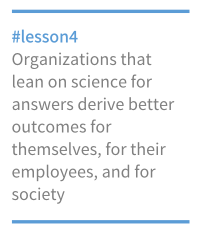 my prior education experience. I found myself getting better every day. I was stretched, challenged and most of all led to believe I had what it takes to be successful. After graduating with a Ph.D. in Industrial and Organizational Psychology from Bowling Green State University (one of the top-ranked programs in I-O Psychology), doors opened up to a tenure-track assistant professor position at the well-known Illinois Institute of Technology. The attraction of solving real-world problems led me to leave academia for one of the best corporate roles I could hope for. Yet again, no personal connections, after multiple rounds of interviews I was deemed to have the capability to build all the human capital systems for Dendrite International (now IMS Health). My reflections led me to conclude that if our development and support systems were based on what works (evidence-based), each of us can have a fair chance of reaching our highest potential.
my prior education experience. I found myself getting better every day. I was stretched, challenged and most of all led to believe I had what it takes to be successful. After graduating with a Ph.D. in Industrial and Organizational Psychology from Bowling Green State University (one of the top-ranked programs in I-O Psychology), doors opened up to a tenure-track assistant professor position at the well-known Illinois Institute of Technology. The attraction of solving real-world problems led me to leave academia for one of the best corporate roles I could hope for. Yet again, no personal connections, after multiple rounds of interviews I was deemed to have the capability to build all the human capital systems for Dendrite International (now IMS Health). My reflections led me to conclude that if our development and support systems were based on what works (evidence-based), each of us can have a fair chance of reaching our highest potential.
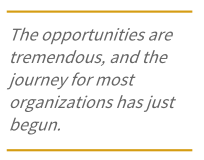 In this article, I present the thesis that organizations that avoid some of the common pitfalls associated with talent analytics, adopt an evidence-based focus, and deliver personalized insights will be better positioned to fulfill the promise that the practice has to offer. If done right, it can offer a significant competitive advantage to organizations. Imagine a learning plan that is automatically created based on the future skill needs and aspirations of an employee. How about the intelligent identification of rotational opportunities to grow your future leaders. Imagine automatic rescheduling of tasks for optimal time utilization, and intelligent calendar management to promote work-life balance. The possibilities are tremendous, and the journey for most organizations has just begun.
In this article, I present the thesis that organizations that avoid some of the common pitfalls associated with talent analytics, adopt an evidence-based focus, and deliver personalized insights will be better positioned to fulfill the promise that the practice has to offer. If done right, it can offer a significant competitive advantage to organizations. Imagine a learning plan that is automatically created based on the future skill needs and aspirations of an employee. How about the intelligent identification of rotational opportunities to grow your future leaders. Imagine automatic rescheduling of tasks for optimal time utilization, and intelligent calendar management to promote work-life balance. The possibilities are tremendous, and the journey for most organizations has just begun.
 engagement. In one such exercise, the data scientists found that of all the practices that were evaluated in their survey, only one had a strong association with employee turnover. In particular, the analyses revealed that those employees who took their vacation days were less likely to exit the organization than those who saved their leave. Based on this finding, the company determined that managers must encourage employees to take all their vacation days within a calendar year. One challenge with this approach could be a false cause-effect attribution. It is possible that those who are saving their vacation days are already planning to leave the organization and perhaps are hoping to catch them out. A better approach would be to look at the predictors of turnover, and select interventions that have a higher probability of delivering the desired outcome. In the case of turnover, a combination of five elements has repeatedly been found in empirical studies to be among the most efficacious predictors. The five factors include satisfaction with pay, promotion, manager, coworker, and the work itself. Basing interventions on prior evidence and designing experiments to find the best solution may be a better use of the analytics functions. The practice of conducting AB testing in marketing leverages a similar idea of experimentation.
engagement. In one such exercise, the data scientists found that of all the practices that were evaluated in their survey, only one had a strong association with employee turnover. In particular, the analyses revealed that those employees who took their vacation days were less likely to exit the organization than those who saved their leave. Based on this finding, the company determined that managers must encourage employees to take all their vacation days within a calendar year. One challenge with this approach could be a false cause-effect attribution. It is possible that those who are saving their vacation days are already planning to leave the organization and perhaps are hoping to catch them out. A better approach would be to look at the predictors of turnover, and select interventions that have a higher probability of delivering the desired outcome. In the case of turnover, a combination of five elements has repeatedly been found in empirical studies to be among the most efficacious predictors. The five factors include satisfaction with pay, promotion, manager, coworker, and the work itself. Basing interventions on prior evidence and designing experiments to find the best solution may be a better use of the analytics functions. The practice of conducting AB testing in marketing leverages a similar idea of experimentation. programming. Talent analytics team members must have a sound understanding of the science of human performance and evidence-based methods. They must also have expertise in specialized statistical techniques relevant for measuring and analyzing people’s data such as scaling and hierarchical linear modeling.
programming. Talent analytics team members must have a sound understanding of the science of human performance and evidence-based methods. They must also have expertise in specialized statistical techniques relevant for measuring and analyzing people’s data such as scaling and hierarchical linear modeling. provides real-time grammar suggestions and learning tips. Imagine similar tools that help a manager prepare for a motivating performance review meeting, or prepare to negotiate with a difficult client. The potential for such methods in unlocking productivity is remarkable. To provide personalized performance support, the analytics must not just focus on the past data but reliably predict what one is likely to do. This is the benefit of prescriptive analytics which enables one to find the best option across multiple future states. Prediction and prescription are some of the key reasons why focus on measures, and evidence-based science is important. The net result of using analytics that provides performance support and presents a forward-looking view is in creating an equal playing ground where the best can rise to the top. I am personally most excited about the potential of talent analytics in creating fair and equitable workplaces, where meritocracy can thrive.
provides real-time grammar suggestions and learning tips. Imagine similar tools that help a manager prepare for a motivating performance review meeting, or prepare to negotiate with a difficult client. The potential for such methods in unlocking productivity is remarkable. To provide personalized performance support, the analytics must not just focus on the past data but reliably predict what one is likely to do. This is the benefit of prescriptive analytics which enables one to find the best option across multiple future states. Prediction and prescription are some of the key reasons why focus on measures, and evidence-based science is important. The net result of using analytics that provides performance support and presents a forward-looking view is in creating an equal playing ground where the best can rise to the top. I am personally most excited about the potential of talent analytics in creating fair and equitable workplaces, where meritocracy can thrive.


